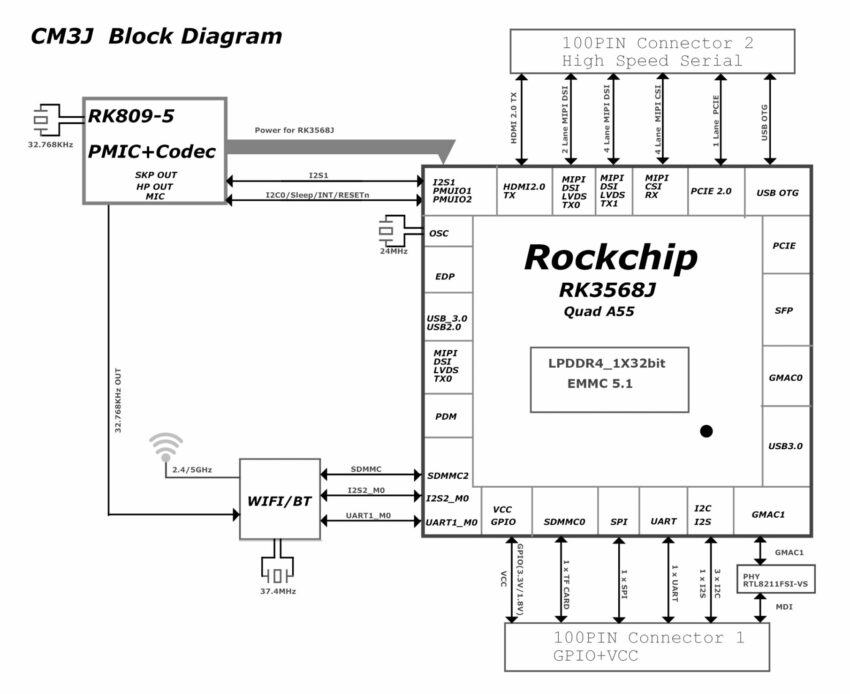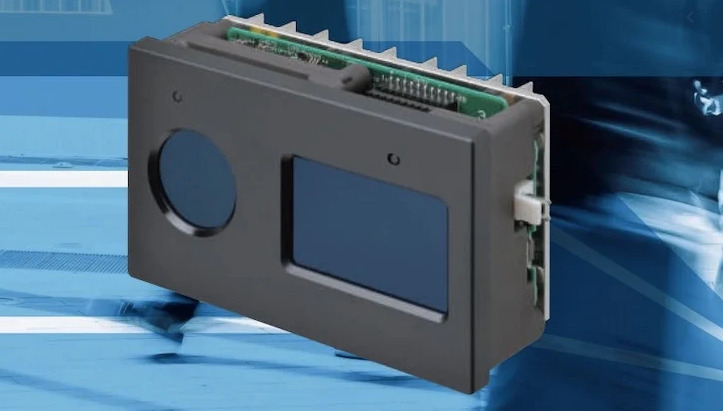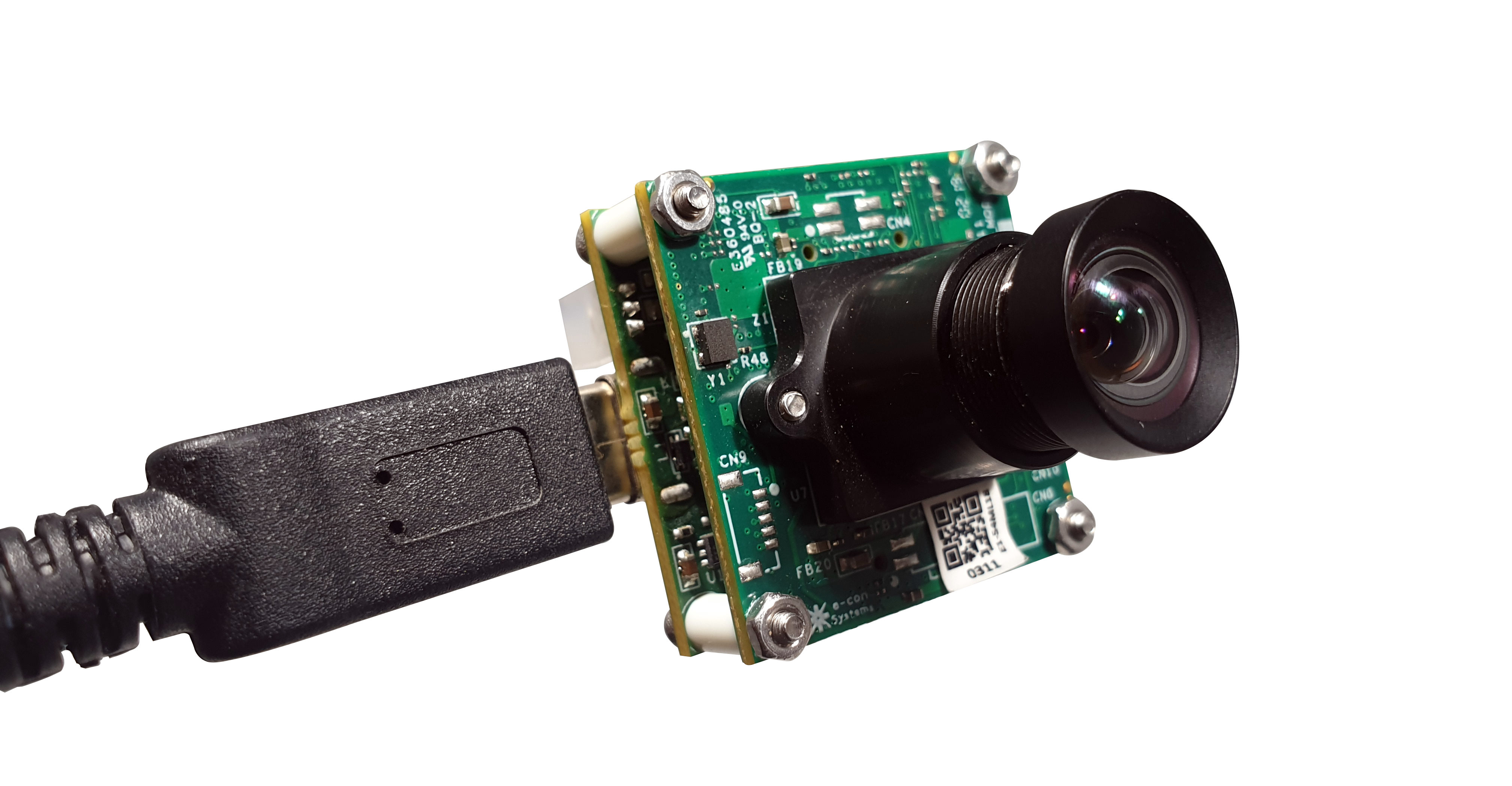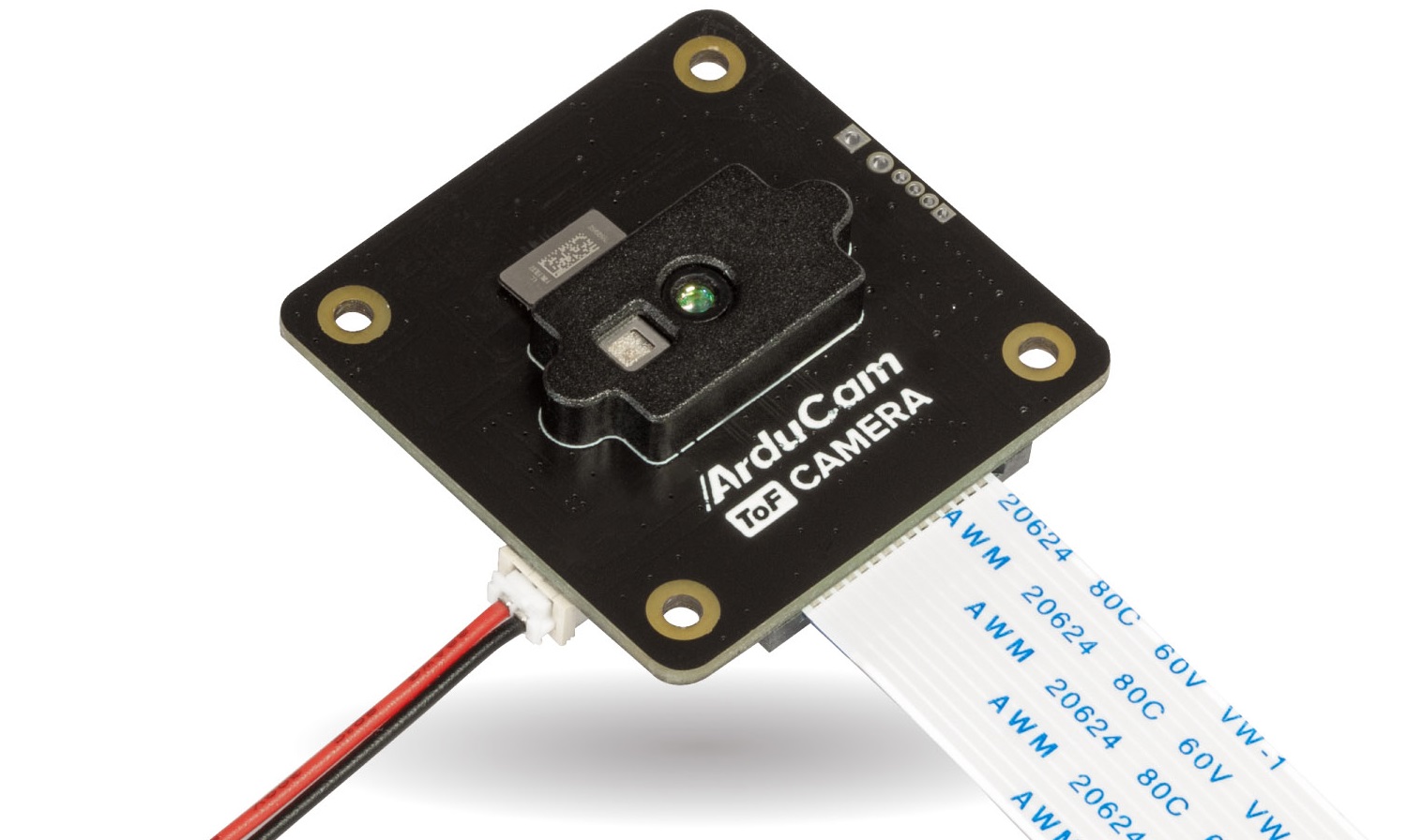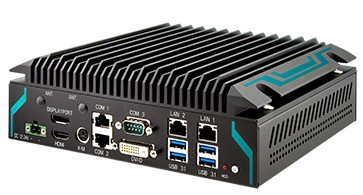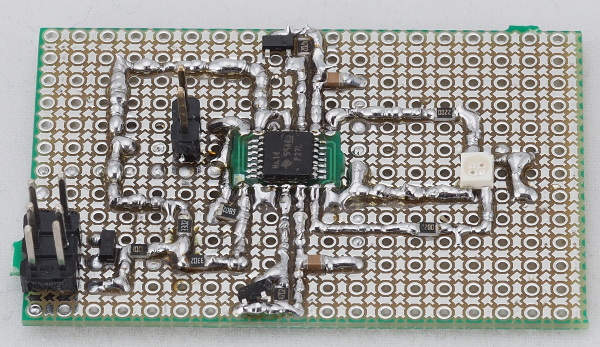
Radxa has introduced a new high-performance, industrial-grade compute module, the CM3J, which is built around the Rockchip RK3568J system-on-chip. This module is specifically designed for embedded edge computing applications that demand reliability, environmental resilience, and compact integration. The SoC is a particular variant of the RK3568 series, engineered for durability and sustained availability in harsh environments.
At the heart of the CM3J compute module is a quad-core Arm Cortex-A55 processor, capable of reaching frequencies of up to 2 GHz. This CPU prioritizes energy efficiency, making it ideal for scenarios requiring continuous operation. Additionally, the SoC features an integrated neural processing unit that can achieve up to 1 TOPS (tera operations per second), making it suitable for AI inference tasks.
For graphics processing, the inclusion of the Arm Mali-G52 is notable, as it supports a variety of major graphics APIs, including OpenGL ES 3.2, OpenCL 2.1, and Vulkan 1.1. Furthermore, the module boasts an 8 MP image signal processor with HDR support, facilitating the integration of high-resolution cameras and advanced imaging capabilities.
Specifications of Radxa CM3J Compute Module
- Processor: Rockchip RK3568J featuring quad-core Arm Cortex-A55 at 2 GHz
- GPU: Arm Mali-G52-2EE with support for OpenGL ES1.1 / 2.0 / 3.0 / 3.1 / 3.2, OpenCL 2.1, and Vulkan 1.1
- NPU: Computing power is up to 1 TOPS at INT8
- Memory: LPDDR4x up to 8 GB, depending on variant
- Storage: Optional onboard eMMC storage, compatible with eMMC 5.1, supports SDMMC interface, SPI flash for bootloader
- Multimedia:
- Decoding: Supports 4K at 60 frames per second for VP9/H.265/H.264
- Encoding: Supports 1080p at 60 frames per second for H.264/H.265
- Wireless connectivity: IEEE 802.11 b/g/n/ac Wi-Fi 5 and Bluetooth 5.0 with BLE
- Ethernet: 1x onboard Gigabit Ethernet PHY
- Video:
- Input: 1x 4-lane MIPI CSI RX or 2×2-lane MIPI CSI RX
- Output: 1x HDMI TX up to 4096x2160p at 60 Hz, 1x 2- and 4-lane MIPI DSI for MIPI LCD, 1x LVDS four lanes
- USB: 1x USB 2.0 OTG/HOST interface
- PCIe: 1x PCIe 2.0 1-lane interface
- Peripherals: UART, SPI, CAN, I2C, I2S, PWM
- Software: Debian/Ubuntu Linux and Android 11/12
- Dimensions: 55×40 mm
- Operating temperature: ‑40 °C to 85 °C
The broad operational temperature range facilitates deployment in challenging environments, including industrial automation, outdoor equipment, and vehicle systems. In high-load situations, implementing active or passive cooling methods, such as heatsinks or fans, may be necessary to sustain performance under prolonged thermal stress.
According to Radxa, the CM3J compute module is compatible with various third-party input/output boards, including the Raspberry Pi CM4 IO board, WaveShare CM4-NANO-B, WaveShare CM4-IO-BASE-B, and the WaveShare CM4-POE-UPS-BASE, among others.
To get started with the Radxa CM3J and the Raspberry Pi Compute Module 4 IO board, users will need a DC 12V/3A adapter, an HDMI cable, and a display compatible with HDMI. Additionally, a USB mouse and keyboard, along with an Ethernet cable for internet connectivity, will be required. The company provides further information on assembly, the booting process, and how to log into the system.






